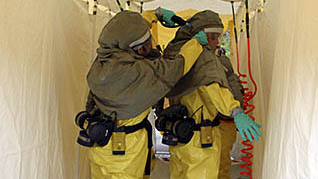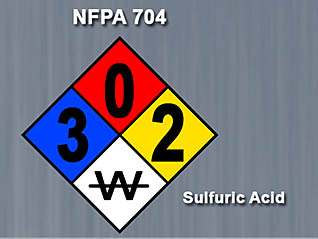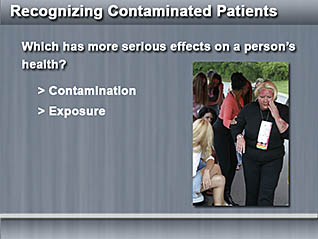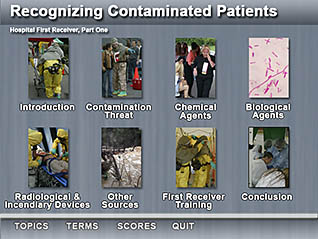Hospital First Receiver 1: Recognizing Contaminated Patients
- Product ID
- efgrhfrc
- Training Time ?
- 74 to 148 minutes
- Language(s)
- English
- Video Format
- Standard Definition
- Required Plugins
- MasteryNet Player
- Lesson Interactions
- 14
- Quiz Questions
- 24
- Closed Captioning



This Health and safety training program is one of four modules created specifically for hospital personnel. It provides detailed instructions regarding steps to take when coming in contact with contaminated patients.
Any incident involving mass casualties from a hazardous material or an event involving weapons of mass destruction (WMD) would place healthcare staff and facilities at risk of contamination. The "Contamination" training module teaches learners the basics of contamination threats, chemical agents, biological agents, and radiological and IED devices. Content then introduces other possible incidents and first receiver training necessary for hospital employees.
This four part training program follows JCAHO's accreditation standards for decontamination and emergency planning; and meets the requirements of OSHA for healthcare personnel to be certified at the Operations Level.
![]() This course is in the Advantage™ format, to read about Advantage™ features click here.
This course is in the Advantage™ format, to read about Advantage™ features click here.

- Rich multimedia presentation with interactions and quiz
- Print certificate and wallet card
- You have 30 days to complete the course
All healthcare personnel who may be assigned to carry out decontamination procedures during a mass casualty incident.
-
Contamination Threat
- Terrorism
- Industrial and natural disasters
- Role of first receivers
-
Chemical Agents
- Nerve agents
- Blood agents and blister agents
- Choking agents and riot control agents
-
Biological Agents
- Bacteria and Rickettsia
- Toxins and viruses
- Effects of a biological attack
-
Radiological & IED Devices
- Radiological devices
- IEDs
-
Other Incidents
- Industrial accidents
- Natural disasters
- Signs of contamination
-
First Receiver Training
- Awareness Level Training
- Operations Level Training
-
Be prepared for incidents that cause contamination.
- Discuss the terrorist threat.
- Explain types of situations that may cause contamination.
- Describe how 1st Receivers manage contaminated victims.
-
Avoid contamination by chemical agents.
- List the 5 types of WMDs.
- List the most common nerve agents and their properties.
- List the common blood agents and their properties.
- List the common blister agents and their properties.
- List the common choking agents and their properties.
- Select common riot control, incapacitating agents and their properties.
-
Avoid contamination from Biological Agents.
- List the 4 classes of Biological Agents.
- Describe common bacteria and rickettsia.
- List the common viruses and toxins.
- Describe how biological and chemical attacks differ.
-
Avoid contamination by radiological and incendiary devices.
- Describe how terrorists may use radiological devices.
- Identify the symptoms of radiological poisoning.
- Describe how an IED is used by terrorists.
- Select injuries that may result from IEDs.
-
Avoid contamination from other types of incidents.
- Explain how industrial accidents result in contamination.
- Describe how natural disasters can result in contamination.
- Explain how healthcare workers recognize contaminated patients.
-
Train to the appropriate level for specified duties.
- Identify employees who must have Awareness Level training.
- Select the elements of Awareness Level training.
- List tasks that require Operations Level training.
- Choose the elements of Operations Level training.
© Mastery Technologies, Inc.


